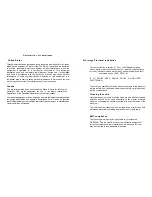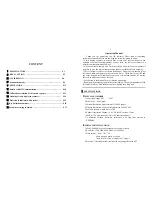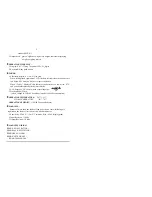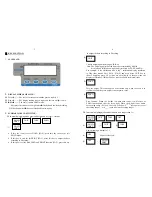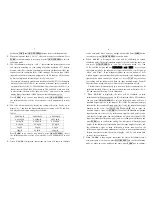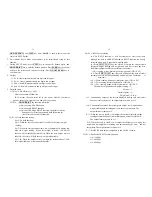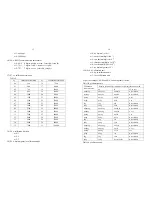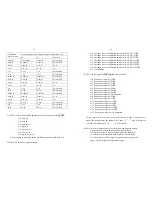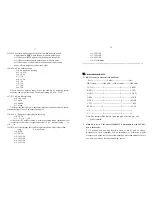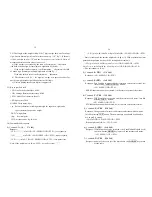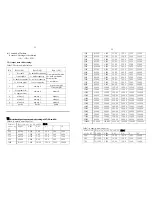
CONTENT
Ⅰ
. SPECIFICATIONS. ……………………………………………… P1
Ⅱ
. KEY FUNCTION. ……………………………………………… P3
Ⅲ
. CALIBRATION. ………………………………….……………… P6
Ⅳ
. Examination mode………………………………………………… P9
Ⅴ
. SETUP MODE. …………………………………………………… P11
Ⅵ
. Details of RS232 Communication………………………………... P18
Ⅶ
. Calibration resolution, division and capacity …..………………… P21
Ⅷ
. Meaning of some displayed symbols. ……………………………. P24
Ⅸ
. Direction of indicator with bracket. ………………………. ……… P25
Ⅹ
.Key Definition summary: ………………………. ………………...… P26
Ⅺ
.Parameters setting summary: ………………………………... ...… P27
Operation Manual
Thank you for purchasing the 140 indicator. Please read all operating
instructions carefully before use and keep the following points in mind:
* Avoid lengthy exposure to extreme heat or cold, your scale works best when
operated at normal room temperature. Always allow the scale to acclimate to a
normal room temperature before use
* Allow sufficient warm up time. Turn the scale on and wait for a few minutes if
possible, to give the internal components a chance to stabilize before weighing.
* These electronic scales are precision instruments. Do not operate near an in-use
cell phone, radio, computer or other electronic device. These devices emit RF and
can cause unstable scale readings. If your scale ever performs poorly, try moving
the scale to a different room or location.
* Avoid using in condition of heavy vibration and airflow.
* Read the weight reading in short time after loading. The output signature of load
cell and A/D may be little influenced after weighing for a long time.
Ⅰ
.
SPECIFICATIONS:
·
SCALE INDICATOR
:
1. Input signal range: 0
mV ~ +30mV
2. Sensitivity: >0.2uV/grad
3. Internal Resolution: Approximately 520,000 counts
4. Display Resolution: can be selected between 500-100,000
5. System Linearity: within 0.01% of FS
6. Loadcell excitation Voltage: +4.4 VDC (MAX current: 55mA)
MAX 4- 350 ohm loadcells. “Only 140 indicator manual”
7. Calibration Method: Software calibration with long-term storage in
EEPROM.
·
SERIAL COMMUNICATIONS:
1. Mode: Full duplex or only output mode can be selected
2. Baud rate: 1200, 2400, 4800, 9600, or 19200 bps
3. Data format: 8NO, 7E1, 7O1
8data bits, non parity, 1 stop bit
7data bits, 1bit even or odd parity, 1 stop bit
4. Protocol: 7selected protocol (include the one compatible with NCI
1


